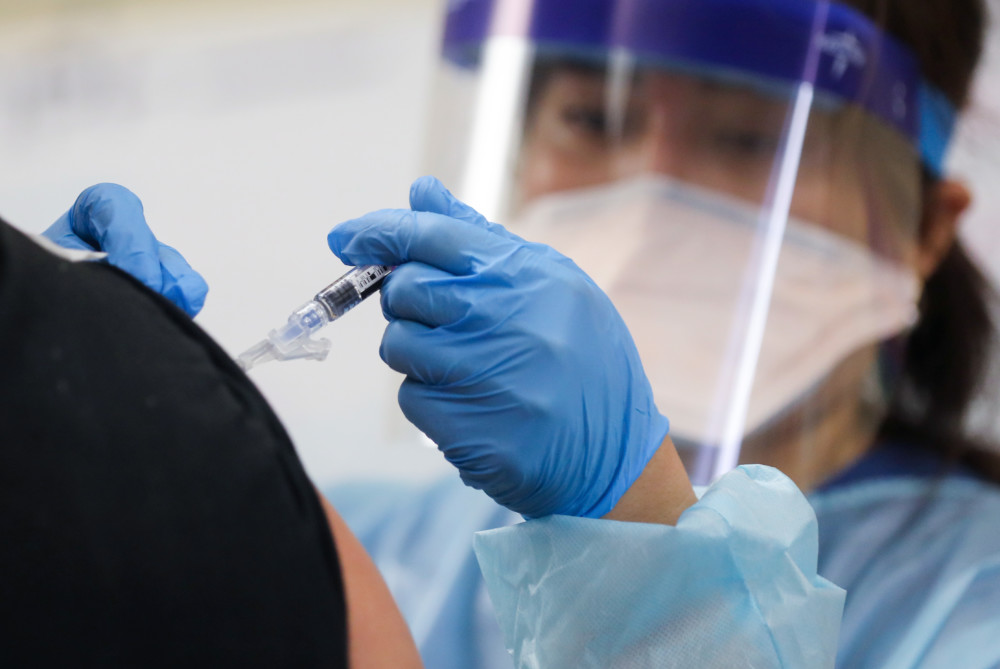By Grace Dickinson
The Philadelphia Inquirer
WWR Article Summary (tl;dr) Dr. Eric Sachinwalla says, “It’s definitely plausible that if someone has both infections, it’s harder for their body to fight that off. And these are two viruses that can potentially cause lung injury and pneumonia.”
Philadelphia
We’ve been dealing with the coronavirus for months. And now the dreaded flu season is upon us. Is it possible that both viruses could infect your body at once?
Yes, you can get the flu and COVID-19 at the same time. But what does that mean?
Health experts are still studying just how common this could be, and what happens if someone gets infected with both. Flu season generally tapers off by April or before, and it wasn’t until March that the World Health Organization declared the coronavirus a pandemic and restrictions were put into place. This fall and winter will be the first time we’ll see a potentially significant intersection between the two viruses.
“We don’t have enough experience to really know if it’s a double whammy situation that becomes really difficult to treat,” says Dr. Eric Sachinwalla, medical director of Infection Prevention and Control at Einstein Medical Center Philadelphia. “It’s definitely plausible that if someone has both infections, it’s harder for their body to fight that off. And these are two viruses that can potentially cause lung injury and pneumonia.”
The people at increased risk for both illnesses include older adults, people with certain underlying medical conditions, and pregnant people. Doctors are worried about how co-infection with these illnesses will affect an already burdened healthcare system. It’s a primary reason experts are urging us all to get the flu shot as soon as possible.
“Our concern is that co-infection may increase duration in the hospital and that makes us concerned about bed availability. If we can try to dampen the transmission of any of these viruses going around, that can help the situation,” says Dr. Patricia Henwood, associate professor of emergency medicine at Thomas Jefferson University’s Sidney Kimmel Medical College, and leader of the Emergency Medicine COVID-19 Task Force at Jefferson Health.
While it’s thought to be less deadly than the coronavirus, the flu sickens millions every year, and during bad years, hospitals can be inundated. In the 2017-2018 U.S. flu season, the CDC estimated 810,000 flu-related hospitalizations and 61,000 flu-associated deaths.
Experts are, however, hoping that everything people are doing to prevent getting the coronavirus, like mask wearing, social distancing, and hand washing, could also protect many people from getting the flu this year. And the push for everyone (six months and older) to get a flu vaccine is stronger than ever.
How do you know if you have the flu, the coronavirus, or both?
It’s hard to tell. The two viruses share many symptoms, including fever, cough, shortness of breath, tiredness, sore throat, headache, runny nose, and body aches. Without testing, this makes it difficult to know which virus you might have. And this applies even if you get the flu vaccine. The effectiveness of a flu vaccine varies from year to year, but it’s never 100%.
“It’s one of the criticisms we hear a lot, but even with that non-perfect vaccine, we find in multiple studies that your risk of dying is lower if you get the flu shot (but still get the flu), especially in high-risk populations like people with heart disease,” says Sachinwalla.
The CDC has found that the flu vaccine benefits public health, especially when it’s well matched to circulating flu viruses. But if you get sick, you’ll still need to get tested to really know if you have COVID-19 or the flu.
Testing is important to determine your next steps, including potential treatment options.
“If someone has the flu, we may give them antivirals against the flu, and if someone has COVID, we might try steroids or remdesivir,” says Sachinwalla.
Testing will also help you decide how long you should isolate at home. If you have the coronavirus, you may be contagious for a longer period of time. Most people who get the flu are advised to stay at home for a week after symptoms appear, and for COVID-19, we’re advised to stay at home for least 10 days after symptoms appear, even if those symptoms go away earlier.
“It’s important for people to know when it’s safe for a child to go back to school, for example, or when you can go back to work,” says Henwood.
Should I go out to get the flu vaccine if COVID-19 rates are high in my area?
With climbing COVID-19 rates nationwide, you might be nervous about entering a doctor’s office or standing in line at the pharmacy to get a flu shot right now. But experts say getting the flu shot is a worthwhile reason to leave your home.
“The safety guidance that public health has put out is meant to help protect you for times when you do need to go out,” says Sachinwalla. “Places are proactively trying to maximize safety, and things like healthcare and getting your flu shot is important.”
Many places allow you to set up an appointment in advance, including a growing number of pharmacies, which can help you avoid crowds and speed up the process.
And if you’re concerned about what a flu shot might do to your immune system, and if it’ll make you more susceptible to getting the coronavirus, Sachinwalla says you needn’t worry. The flu shot doesn’t weaken your immune system.
“The flu shot usually activates your immune system,” he says. “That’s why people may get mild symptoms like a low-grade fever — that’s your immune system responding to the shot.”
___
Distributed by Tribune Content Agency, LLC














































































































































































































































































































































































